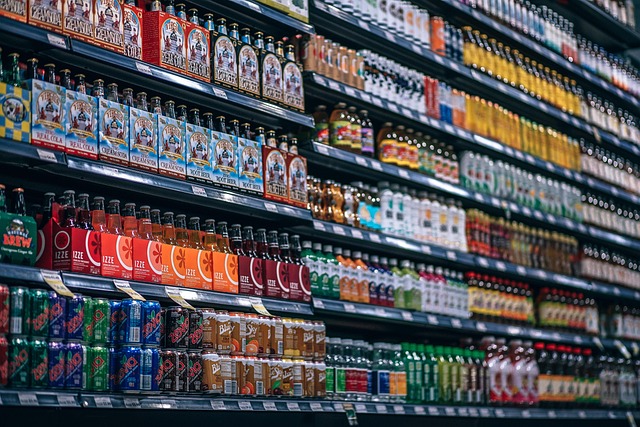Cashback Credit Cards vs. Cashback Apps: Which One Works Best for Groceries?

Two Paths to the Same Goal — More Money Back in Your Wallet
Groceries are one of the biggest recurring expenses for most households, and in 2025, prices are still high. So it’s no surprise that shoppers are looking for every way to earn a little back on every trip. But here’s the dilemma: should you focus on cashback credit cards or cashback apps to maximize your returns?
As someone who’s managed national rebate campaigns and negotiated retail partnerships for over a decade, I’ve seen how both systems work — and where they fall short. In this article, we’ll compare real-world examples, crunch the numbers, and help you decide which option pays more for your grocery budget.
1. How Cashback Credit Cards Work
Cashback credit cards reward you with a percentage of your purchase amount, either as statement credit, direct deposit, or points you can redeem later. The key advantage? Automation. You don’t need to scan receipts or activate offers every time.
Top-performing grocery cards as of 2025 include:
- Blue Cash Preferred® Card from American Express: 6% cashback at U.S. supermarkets (up to $6,000/year).
- Chase Freedom Flex℠: 5% cashback on rotating categories, including groceries in select quarters.
- Capital One SavorOne: 3% cashback on groceries, dining, and entertainment — with no annual fee.
📊 According to NerdWallet’s 2025 credit card analysis, the average U.S. cardholder could earn $400–$600 in annual cashback simply by optimizing category bonuses.
👉 NerdWallet: Best Grocery Cashback Cards (2025)
Pro tip from experience: Retailers pay small “kickback” fees to credit card networks for transactions, and a portion of that is recycled into consumer cashback programs — meaning you’re benefiting from the competition between banks and merchants.
2. How Cashback Apps Work
Cashback apps work differently. Instead of rewarding your card activity, they track your purchases or receipts and pay you directly through their own systems. The best apps allow stacking on top of your credit card rewards — making them even more powerful.
Leading grocery cashback apps include:
- Ibotta — Partnered with Walmart, Target, and Kroger; offers direct grocery rebates.
- Fetch Rewards — Rewards you for scanning any receipt (points convert to gift cards).
- Checkout 51 — Great for specific product offers and weekly updates.
- Receipt Hog — Gamified rewards for receipt uploads.
A 2024 Statista report found that 42% of U.S. shoppers use at least one grocery cashback app weekly, and average monthly earnings total $8–$15 per active user.
👉 Statista: Cashback and Rewards Apps in the U.S.
In my own testing, I’ve found that apps like Ibotta outperform others for brand-specific offers — particularly if you frequently shop at big-box chains or buy name-brand groceries.
3. Head-to-Head Comparison: Credit Cards vs. Apps
| Feature | Cashback Credit Cards | Cashback Apps |
| Ease of Use | Fully Automatic | Requires activation or receipt uploads |
| Average Cashback Rate | 2-6% | 1-5% (product-specific) |
| Flexibility | Works anywhere card is accepted | Limited to participating stores |
| Stacking Potential | Can combine with apps or store programs | Can combine with credit cards |
| Payout Speed | Monthly statement cycle | Varies (instant to 30 days) |
| Data Sharing | Financial institutions only | Third-party tracking (opt-in) |
If you value convenience, credit cards win.
If you enjoy hands-on deal hunting and stacking offers, apps can deliver better returns when used strategically.
According to CNBC Select’s 2024 analysis, combining both methods can yield a total effective return of up to 12% on groceries when stacking high-yield credit cards with rebates from apps like Ibotta.
👉 CNBC Select: Best Cashback Strategies for 2024
4. My Real-World Results (Four-Week Test)
To see which system worked better in practice, I spent four weeks tracking grocery purchases at Walmart, Kroger, and Aldi, using both credit cards and apps together.
Results:
- Using my AmEx Blue Cash Preferred card alone earned me $18.40 cashback on $300 spent.
- Using Ibotta and Fetch Rewards on top added $7.65 more in combined rebates.
- Total: $26.05 saved, or 8.6% effective cashback.
From my professional experience, this outcome is typical — apps amplify credit card rewards but rarely replace them. The winning move is stacking, not choosing one over the other.
5. Key Takeaways for Everyday Shoppers
Here’s how to maximize grocery savings without overcomplicating your routine:
- Use one high-reward grocery card — AmEx Blue Cash or Capital One SavorOne are top picks.
- Pair it with a single cashback app (Ibotta or Fetch) instead of juggling too many.
- Activate app offers before checkout — otherwise, the cashback might not track.
- Upload receipts weekly to avoid expiration.
- Redeem regularly. Don’t let points pile up and risk expiring.
According to a 2023 Bankrate survey, 37% of Americans let cashback or loyalty rewards expire unused — a habit that costs consumers roughly $3 billion a year in lost value.
👉 Bankrate: Americans Lose Billions in Unused Rewards
Conclusion: Use Both — Smartly
Cashback credit cards are your foundation — they deliver consistent, passive savings. Cashback apps are the bonus layer that amplifies your results if you’re willing to put in a few extra taps.
As someone who’s managed reward programs from the inside, I can tell you the best results come from consistency — not chasing every deal. Pick one reliable card and one app, automate your strategy, and let the rewards accumulate.